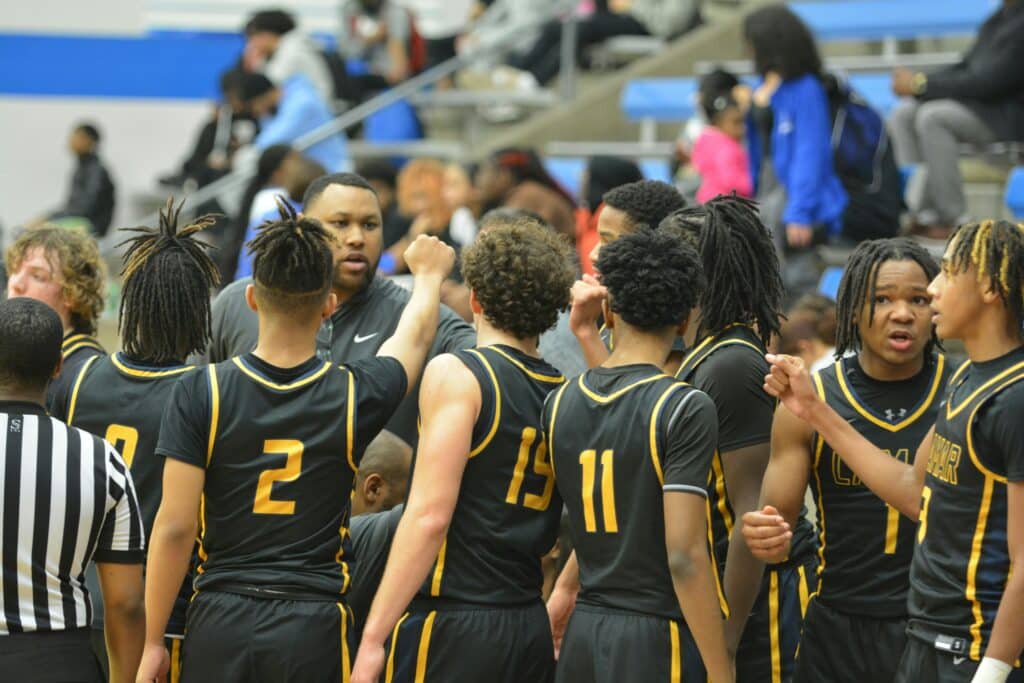
How to Create a Positive Coaching Environment: Building Trust, Encouraging Growth, and Fostering Team Unity
Creating a positive coaching environment is essential for fostering player development, teamwork, and overall success. A positive atmosphere encourages players to perform at their best, build strong relationships, and thrive both on and off the court.
This article outlines key strategies for creating and maintaining a positive coaching environment that supports growth and enhances team cohesion.

1. Establish Clear Communication
Effective communication is the cornerstone of a positive coaching environment. Ensure that all interactions are clear, constructive, and respectful.
Open Dialogue
Foster an open line of communication between coaches and players. Encourage players to voice their opinions, ask questions, and provide feedback. This creates an environment of trust and mutual respect.
- Regular Check-Ins: Schedule one-on-one meetings or team discussions where players can express their thoughts and feelings about practices, games, and their personal development.
Active Listening
Practice active listening by paying full attention to what players are saying and responding thoughtfully. Show that you value their input and are committed to addressing their concerns.
- Paraphrasing: Repeat back what players have said to show understanding and ensure clarity. This practice reinforces their feelings and demonstrates that you are engaged in the conversation.
Constructive Feedback
Provide feedback that is constructive and focused on improvement. Highlight what players are doing well and offer specific suggestions for areas of growth.
- Balance Positive and Negative: Use the “sandwich” method when providing feedback: start with something positive, discuss areas for improvement, and finish with another positive note to keep morale high.

2. Build Strong Relationships
Building strong relationships with players and among teammates is crucial for a positive coaching environment. Relationships based on trust and respect create a supportive and collaborative team culture.
Get to Know Your Players
Take time to understand each player’s strengths, weaknesses, and personal interests. Show genuine interest in their development both as athletes and individuals.
- Personal Check-Ins: Regularly ask players about their lives outside of basketball, such as their interests, school, or family. This builds rapport and makes them feel valued.
Encourage Team Bonding
Promote team-building activities that foster camaraderie and mutual support. Activities such as team outings, bonding exercises, and group discussions strengthen relationships and build team spirit.
- Team Retreats: Organize team retreats or social events where players can bond in a relaxed setting. This helps to build trust and understanding among teammates.
Be Approachable
Make yourself approachable and available to players. Encourage open discussions and be willing to support them through challenges, both on and off the court.
- Office Hours: Set aside specific times when players can come to talk to you about any issues they’re facing. This creates a safe space for communication.
3. Promote a Growth Mindset
Fostering a growth mindset within the team helps create a positive environment where players are motivated to improve and learn from their experiences.
Emphasize Effort Over Outcome
Encourage players to focus on their effort and improvement rather than just winning or losing. Recognize and reward hard work and persistence.
- Progress Tracking: Use individual player goals and track progress over the season. Celebrate improvements, even if they don’t lead to wins.
Encourage Learning from Mistakes
Help players view mistakes as opportunities for growth. Encourage them to analyze their errors, learn from them, and apply the lessons to future performances.
- Post-Game Reviews: After games, conduct reviews where players discuss what they learned from their mistakes and how they can improve next time.
Set Realistic Goals
Work with players to set achievable goals that promote personal and team growth. Celebrate progress and milestones to keep players motivated.
- SMART Goals: Encourage players to set Specific, Measurable, Achievable, Relevant, and Time-bound (SMART) goals to give them clear targets to work towards.

4. Create a Supportive Atmosphere
A supportive atmosphere ensures that players feel valued, respected, and motivated to contribute their best efforts.
Positive Reinforcement
Use positive reinforcement to acknowledge and reward players’ efforts and achievements. Praise their hard work, improvement, and teamwork.
- Player of the Week: Introduce a “Player of the Week” recognition to highlight players who exemplify hard work, improvement, or teamwork.
Encourage Respect and Sportsmanship
Promote respect and good sportsmanship among players. Set clear expectations for respectful behavior and emphasize the importance of fair play and respect for opponents.
- Team Values: Establish team values that prioritize respect and sportsmanship, and regularly remind players of these values.
Provide Emotional Support
Be attentive to players’ emotional well-being and offer support when needed. Recognize signs of stress or frustration and provide encouragement and guidance.
- Mental Health Resources: Make sure players know about available resources for mental health support, such as school counselors or sports psychologists.

5. Foster a Collaborative Team Culture
A collaborative team culture enhances teamwork and creates a positive environment where players work together towards common goals.
Encourage Collaboration
Promote collaboration and teamwork during practices and games. Use drills and exercises that require players to work together and support each other.
- Small-Sided Games: Implement small-sided games in practice that require players to communicate and work as a team to achieve goals.
Involve Players in Decision-Making
Include players in the decision-making process when appropriate. Involve them in setting team goals, developing strategies, and addressing team issues.
- Player Committees: Create committees for different aspects of the team, such as social activities, fundraising, or game strategy, allowing players to take ownership.
Celebrate Team Successes
Recognize and celebrate team achievements, both big and small. Acknowledge the contributions of all players and reinforce the value of teamwork.
- End-of-Season Celebration: Host a celebratory event at the end of the season to recognize achievements and build team spirit.

6. Maintain Consistent and Fair Leadership
Consistent and fair leadership is crucial for maintaining a positive coaching environment. Ensure that your coaching practices are equitable and transparent.
Be Consistent
Apply rules and expectations consistently to all players. Avoid favoritism and ensure that all players are held to the same standards.
- Clear Guidelines: Establish and communicate clear guidelines and expectations for behavior and performance, so everyone understands what is required.
Lead by Example
Demonstrate the behaviors and attitudes you expect from your players. Show integrity, professionalism, and respect in all interactions.
- Role Modeling: Be a role model in sportsmanship and respect, especially during challenging situations, to reinforce the importance of these values.
Address Issues Promptly
Address any issues or conflicts promptly and fairly. Resolve problems in a manner that is respectful and in the best interest of the team.
- Conflict Resolution: Utilize conflict resolution techniques to mediate disputes among players and ensure that all voices are heard.
How to Create a Positive Coaching Environment Conclusion:
Creating a positive coaching environment involves establishing clear communication, building strong relationships, promoting a growth mindset, creating a supportive atmosphere, fostering a collaborative team culture, and maintaining consistent and fair leadership.
By implementing these strategies, you can cultivate an environment where players feel motivated, respected, and supported, leading to greater success and enjoyment on the court.



